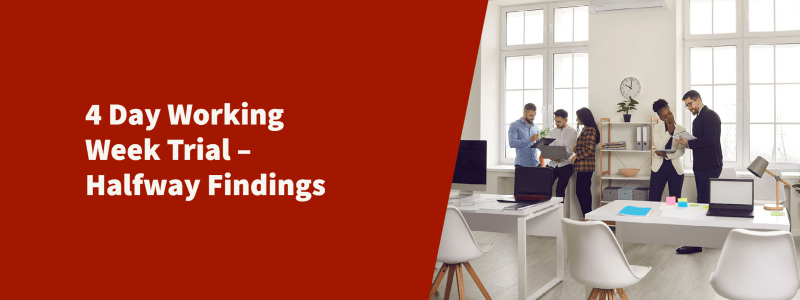Three months ago, 180 companies started a trial to find the effectiveness and impact of reducing the 5-day working week to a 32-hour, 4 day working week. This trial was started to bring some more solid proof to the idea that shorter weeks both improve productivity over the same period and improve employee satisfaction and wellbeing within their role and home life.
The six-month trial, started in July, is halfway through the process, and some of the reports released this week have given the trial a shot in the arm. The results are proving overwhelmingly successful, with a number of businesses already stating on record that they will keep the 4-day work week even once the trial is over. But what do you need to know at the three-month period of the trail? Let Direct365 fill you in.
When did the 4-day working week trial start?
Talk of a 4-day working week have been going on for some time. So, it was curious to hear that a proper trial was starting. This began in June 2022 and is due to last for 6 months. The reports that have come out now – Sept 2022 – take in the results from the half-way stage. There are still another three months to go.
What are the outcomes of the 4-day working week trial so far?
So far, the trial seems overwhelmingly positive. Citing a survey that was conducted last week, Fortune.com say that 78% of the leaders involved in the trial at U.K. firms say the transition was “seamless”. A good start, indeed.
The results improve even more so when you dig deep, discovering that only 2% of leaders found the trial challenging, while 88% thought it was working well.
The productivity was another major plus point. 49% of organisations stated that productivity had risen, while another 46% of the group stated that productivity remained the same. Positive results for the first part of the trial.
Can the 4-day week help my business?
Potentially, yes. There’s a lot of moving parts to the experiment. While productivity is clearly unaffected, the recent study does admit there are drawbacks for some businesses.
While some industries find it difficult to adapt, it has also been said that smaller businesses are finding it tougher to adapt to. But there’s a potential increase in business activity if the 4 day week improves productivity of your workforce.
What next?
Well, the trial is only part of the way through right now, with it due to end in November. So I suppose time will tell. The results of the trial will show just how many businesses saw a raise or dip in productivity. A tell-tale sign will be how many of the trialist businesses take up the 4 day week after the scheme ends.
Whatever happens at the end of the trial, it’s certain that employees and employers will be keeping an eye on the working landscape over the coming years. Start-ups or younger businesses are often the first to implement newer working practices – working from home springs to mind. The next few years will prove key in how habits change for businesses, and what employees look for.
Back
